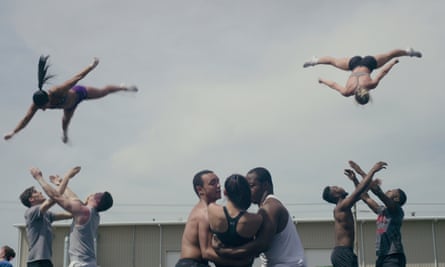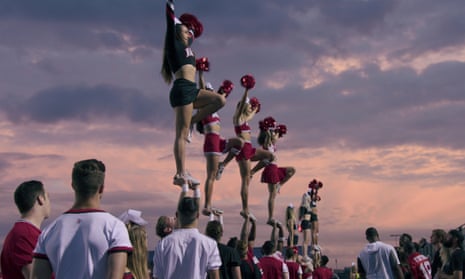If you’re yet to watch Cheer, Netflix’s new cheerleading documentary, chances are it’s down to the subject matter. You might not understand cheerleading, or it might seem too positive for your curdled British mindset, or you might simply think you have no interest in it whatsoever. But let me tell you; you are making a mistake. Cheer was created by Greg Whiteley, and that alone should be enough to make you watch.
I understand your position perfectly. Whiteley’s last series was Last Chance U, which I had no intention of watching until I was forced to. “It’s about American football,” my editor told me. “You’ll love it.” I disagreed sight unseen, on the basis that I had never watched American football and didn’t follow or even understand American football.
And yet Last Chance U is a flat-out masterpiece. It’s about American football, but it isn’t about American football. It’s about young people from troubled backgrounds trying to put their pasts behind them to achieve something incredible. When it works, it’s thrilling. When it doesn’t work – and it often doesn’t – it’s like watching a Shakespearean tragedy. All four seasons have been tremendous.
But what’s becoming apparent now is that it was no fluke. Cheer replicates – even improves upon – the thrill of Last Chance U. It’s perfect. We’re 16 days into January, and it’s impossible to imagine that anyone else will make a documentary series as good this year.

Rather than rah-rahing at the side of football matches, the subjects of Cheer take part in competitive cheerleading, which is arguably the most nerve-racking thing a person could ever watch. It’s a cross between high-level gymnastics and circus performing, with cheerleaders being flung metres into the air like rag dolls. Every time – every single time – they fell earthwards during the series, my sphincter clenched with fear. With good reason, because sometimes they land with a sickening crunch and end up horribly injured, but nevertheless that’s a lot of clenching.
In time-honoured Last Chance U tradition, Cheer follows one high-ranking team – that of Navarro college in Texas – as they prepare for a nationwide competition. We see the agony of not being picked, the gruel of training, we learn the tragic backstories of some of the subjects and we become fully invested in the team as an entity.
What Cheer lacks, arguably to its advantage, is the dark heart of Last Chance U. That show was underpinned by its two toxic head coaches, Buddy Stephens and Jason Brown. They were screaming, furious, too-masculine figures who tore about like a pair of sentient heart attacks destroying as much as they created. But Cheer’s head coach is Monica Aldama, who is a much more reassuring presence. Make no mistake, Aldama has a cruel streak – in one episode, she deliberately pushes a cheerleader to the brink of injury for defying her – but she proves time and time again that she isn’t like Stephens or Brown. She truly seems to care about the squad as people.

This essential positivity bleeds through Cheer. Unlike many of the Last Chance U subjects, who have long since buried themselves under layers of machismo, the Cheer subjects are open and eloquent about their feelings. They pull together in times of trouble, and they’re ready to talk it out when things start to go south.
Inevitably, they go south a lot. My pet theory about Whiteley documentaries is that, deep down, they’re all about parents. Last Chance U was about the moment you realise that a parental figure is mistreating you. Cheer is even more explicit. It seems like nobody at Navarro had a decent upbringing. Some have parents who are disinterested or out of their depth. Some are overbearing. Some are outright absent. All these people have broken families, and we watch as they discover that the cheer team represents an opportunity for them to build one of their own. It is an incredibly touching thing to witness.
And, of course, it’s deliberate. Whiteley has an uncanny gift for knowing exactly when to drop a backstory into an episode to recalibrate our assumptions or explain a behavioural tic. He’s also able to structure the raw material of his footage into something that feels like a movie. When a catcher slips and a cheerleader smashes her head into the ground, we know objectively that it’s just a random accident. Whiteley’s gift is that he makes it seem inevitable, like it was always going to be a major plot point from the very beginning. I have no idea how he does it. It’s like a magic trick.
So Last Chance U was no fluke. Cheer has proved that this is just the level Whiteley works at. If you haven’t seen Cheer, fix that immediately. If you have, you should wait with bated breath to see what Whiteley does next. I know that’s what I’ll be doing.

Comments (…)
Sign in or create your Guardian account to join the discussion